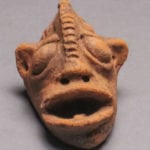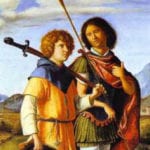 Politics
Politics 10 U.S. Presidents Who Cheated on Their Wives
 Humans
Humans The 20th Century’s 10 Most Famous Centenarians
 History
History 10 Influencers Who Lived Centuries before Social Media
 Miscellaneous
Miscellaneous 10 Ancient Etiquette Rules You Never Knew Existed
 Our World
Our World Planet Earth’s 10 Most Hardcore Natural Creations
 Movies and TV
Movies and TV 10 Times Twin Movies Competed with Each Other
 The Arts
The Arts 10 Masterpieces Plucked from the Artist’s Subconscious
 Crime
Crime 10 Fascinating Facts about Rikers Island
 Pop Culture
Pop Culture 10 Things You Might Not Know about Dracula
10 Practical Movie Monsters Remade with CGI
 Politics
Politics 10 U.S. Presidents Who Cheated on Their Wives
 Humans
Humans The 20th Century’s 10 Most Famous Centenarians
Who's Behind Listverse?

Jamie Frater
Head Editor
Jamie founded Listverse due to an insatiable desire to share fascinating, obscure, and bizarre facts. He has been a guest speaker on numerous national radio and television stations and is a five time published author.
More About Us History
History 10 Influencers Who Lived Centuries before Social Media
 Miscellaneous
Miscellaneous 10 Ancient Etiquette Rules You Never Knew Existed
 Our World
Our World Planet Earth’s 10 Most Hardcore Natural Creations
 Movies and TV
Movies and TV 10 Times Twin Movies Competed with Each Other
 The Arts
The Arts 10 Masterpieces Plucked from the Artist’s Subconscious
 Crime
Crime 10 Fascinating Facts about Rikers Island
 Pop Culture
Pop Culture 10 Things You Might Not Know about Dracula
10 Fascinating Dwarfs From World History
Dwarfs have often been reduced to figures of fun and mockery or the recipients of condescension and pity, neither of which is fair or deserved. In recent years, the success of prominent and talented dwarfs in the mass media, like the self-deprecating Warwick Davis and the brilliant Peter Dinklage, have changed attitudes, but there’s still a long way to go. Throughout human history, there have been some interesting and fascinating dwarfs who are worth learning about.
This article is sticking with the terminology “dwarf” and “dwarfs.” The Little People of America FAQ indicates that “midget” is no longer used and is considered offensive by some, but “dwarf” is generally acceptable. Meanwhile, the plural “dwarves” was not popularized in English until it was used in the works of J.R.R. Tolkien, and it is more commonly used to describe the fantastic race of magical, bearded miners than actual humans with dwarfism.
10 Sir Jeffrey Hudson
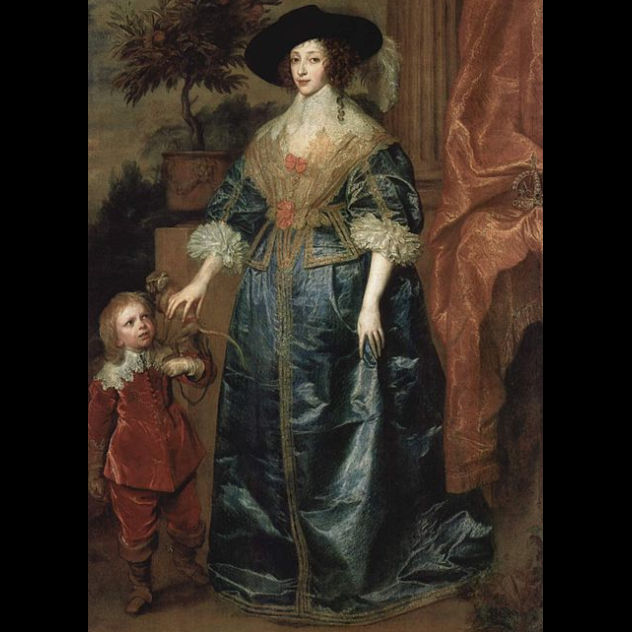
The son of a prominent butcher, Jeffery Hudson entered the court of Charles I as a page for Queen Henrietta Maria at the age of eight or nine. It is said that he was presented during a party thrown by the duke of Birmingham for the king and queen, in which Hudson was introduced encased within a pie crust. The queen took an interest in him. He also became popular at court and was given a number of important duties, such as fetching the queen’s midwife from France.
As he grew older, Hudson tired of mockery from certain sections of the court, where his nickname was “Lord Minimus.” Sir William Davenant wrote a satirical poem about a fight between Hudson and an angry turkey cock, called “The Jeffriedos”:
Jeffrey strait was thrown, when, fast and weak
The cruel fowl assaults him with his beak.
A lady midwife now he there by chance
Espied, that came along with him from France.
“A heart brought up in war, that ne’er before
This time could bow,” he said, “doth now implore
Thou, that delivered hast so many, be
so kind of nature as deliver me.”
Hudson apparently ran out of patience, and in one notable incident, he challenged a porter named Mr. Crofts to a duel on horseback with pistols. Crofts contemptuously took along a squirt gun, to “snuff out his opponent.” The Letters of Henrietta Maria record the battle:
A gentleman of the household, Mr Croft, lost no time in provoking the dwarf to challenge him: a duel, only meant for fun, was arranged in the park at Nevers. Croft and the dwarf were to meet on horseback, armed with pistols. The gibing cavalier took no fire-arms, but merely a huge squirt, with which he meant at once to extinguish his small adversary, and the powder of his weapon. The vengeful dwarf, however, managed his good steed with sufficient address to avoid the shower aimed at himself and his loaded pistols, and, withal, to shoot his laughing adversary dead.
The incident left Hudson disgraced, and he was expelled from the court. He spent a number of years in captivity after being captured by Barbary pirates, but he was later released and joined with the exiled queen in France during the English Civil War in 1644. He returned to England in the late 1650s. There are indications that he served as an espionage asset, but he was implicated in the Popish plot and was imprisoned in Gatehouse Prison until his death. For more information on Sir Jeffrey Hudson, check out the page from our sister site, KnowledgeNuts.
9 Charles Proteus Steinmetz
Known as the Wizard of Schenectady, Charles Proteus Steinmetz was a mathematics and electrical engineering genius who was friends with Einstein, Edison, and Tesla. In spite of being a prodigy at the University of Breslau, he was forced to flee Germany due to hostile official interest in his involvement with a socialist newspaper. At Ellis Island, he was almost refused entry to the United States due to his dwarfism, but an American friend convinced customs officers of his genius.
His mathematical Law of Hysteresis (aka Steinmetz’s Law), which governed power loss, as well as his work on alternating currents, helped to revolutionize electrical engineering. His work on Hysteresis loops, which involve magnetism in iron cores, was invaluable in the understanding and development of electronics and was a field that had left other inventors and scientists completely stumped, including Tesla, Westinghouse, and Edison. The latter, true to form, quickly bought out all of Steinmetz’s patents and even the entire company he worked for, putting him under the employ of General Electric.
In one notable situation, Steinmetz was asked to inspect one of Henry Ford’s generators. After several days of calculations, he made a chalk mark on the generator and told the engineers to replace 16 windings from the field coil at the place indicated. It worked, but Ford balked at the $10,000 bill that he received, which was unprecedented because Steinmetz really had no idea what he should be charging. The General Electric bureaucracy asked for an itemized invoice, so Steinmetz sent the following bill to Ford:
Making chalk mark on generator $1.
Knowing where to make mark $9,999.
Ford paid in full.
8 Ancient Egyptian Dwarfs
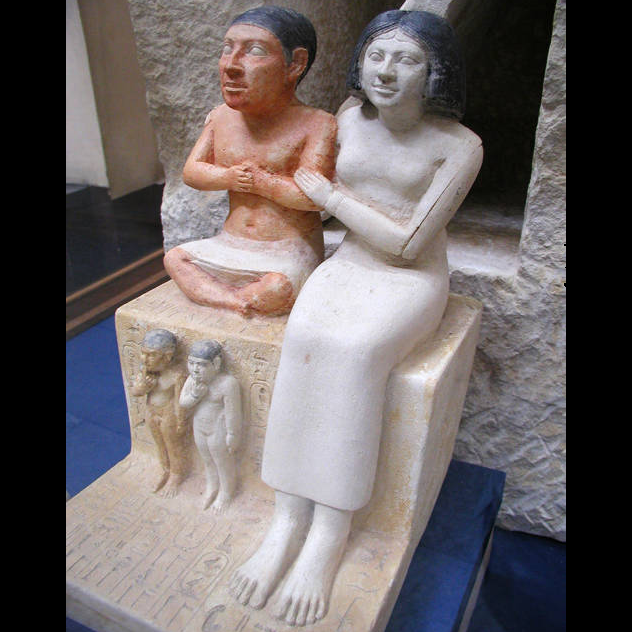
Dwarfs were highly esteemed in ancient Egypt and regularly employed in the courts of the pharaohs. They held a variety of occupations, such as jewelry makers, animal or pet handlers, fishermen, entertainers, dancers, nurses, and midwives. Some rose to the elite. Several ancient Egyptian gods were also often portrayed as dwarfs, such as Ptah, creator of the universe, and Bes, a god of love, sexuality, and childbirth. During labor, pregnant women would beseech the benevolent intervention of Bes through the “spell of the dwarf”: “O good dwarf, come, because of the one who sent you . . . come down placenta, come down placenta, come down!”
The most famous elite dwarf was Seneb (pictured above with his wife), the head of the royal textile works under King Pepi II in the Sixth Dynasty. He was also the chief priest of the funerary temples of Fourth Dynasty pharaohs Djedefre and Khufu (who built the Great Pyramid of Giza). When he died, he was given an elaborate tomb, and archaeological evidence shows that he was a man of high standing who possessed vast estates, leisure boats, and an entourage of servants and attendants.
Another prominent Egyptian dwarf was Chnoum-Hotep, who held the position of chief of perfume or head of the wardrobe in the court of a Fifth Dynasty pharaoh. He held this esteemed position in spite of suffering from achondroplasia (meaning “without cartilage formation”), a disorder that leaves sufferers with disproportionately short limbs and an enlarged head.
The ancient Egyptian obsession with dwarfs also extended to the pygmy peoples of equatorial Africa. The acclaimed general Harkhuf took an expedition farther into Africa and reported the acquisition of a pygmy who performed dances. The child pharaoh Pepi II wrote back:
You said that you sent a dwarf (deneg) of the god’s dances. Please bring this dwarf with you . . . to do the god’s dances to gladden the heart of . . . the king [Pepi II]. If he comes with you in the boat, arrange trustworthy people to be around him on the two sides of the boat, who shall guard him lest he falls into the water.
7 Bushwick Bill
Since 1984, Jamaican-born rapper Bushwick Bill was a member of the influential Houston rap group Geto Boys, who created a paranoid, violent, and controversial form of Southern rap and went platinum in 1991 with the album We Can’t Be Stopped. A self-described introvert, he believes that he might have been less immediately obvious as a rapper in the hip-hop scene if it wasn’t for his diminutive height, but he has successfully transitioned from “Look at the short guy” to “It’s Bushwick Bill!” Regardless, “Either way it’s notoriety.”
He has quite a few crazy tales from his storied career, perhaps the most famous being the shooting in which he lost an eye. Heavily intoxicated from alcohol and marijuana, he paid a visit to a girlfriend and requested that she shoot him in the face. She panicked, so he grabbed and threatened her baby. Unsurprisingly, she shot him in the eye. In an interview with the Murder Master Music Show, Bushwick Bill described the aftermath:
I died June 19th 1991. I was in the morgue for two hours and 45 minutes before I came to. My toe was tagged and they were pushing me in the drawer and I looked both ways and I saw frozen people to the left and frozen people to the right. I thought I was dreaming then I saw people in front of me pushing the door closed and I was like, “Yo!” And everybody stopped and I said, “I have to pee” and I jumped up and pulled the catheter out and the security for the morgue stood there and I ended up peeing on his leg and he took off running [and said] “He’s alive somebody help!” They ran back in there and shot me up with a big needle and I woke up handcuffed to a hospital bed.
Rapping about the incident the track “Ever So Clear” from his solo album Little Big Man, he said, “It’s messed up I had to lose an eye to see things clearly.”
His problems with substance abuse seemed to be behind him when he became a born-again Christian in 2006, but he fell off the wagon in 2010 following the possible murder of a Houston friend, Lonnie Mack, who helped Bushwick Bill establish the connections that made his entire career possible. Pulled over at a traffic stop while in possession of cocaine and marijuana, Bushwick Bill’s immigration status came under question, and he was under threat of deportation to Jamaica, where he hadn’t lived since he was a small child. However, he said he was more likely to end up in Canada or the UK, where he has followings. Probably due to his status and fame, he was later released and faced only a misdemeanor charge.
6 Andreas Vesalius
Andreas Vesalius, a Flemish-born 16th-century anatomist, helped to correct misconceptions about the human body that dated back centuries. Vesalius was born to a family of physicians; his father and grandfather had both served the Holy Roman emperor. He studied medicine in both Paris and Padua. After he received his doctorate in 1537, he was immediately offered the position of professor of surgery and anatomy at the University of Padua.
At the time, surgery and anatomy were considered to be less important medical branches. Vesalius, however, believed in the importance of anatomy and always performed his own dissections to produce anatomical charts of the circulatory and nervous systems. He worked closely with professional artists to ensure that the illustrations were both very accurate and attractive to look at. He put his theoretical studies to practical use by producing a pamphlet on bloodletting, which was a popular treatment, and causing controversy over the location one should extract the blood from.
From 1539, Vesalius’s materials for dissection increased, as a Paduan judge had become interested in his work and made the corpses of executed criminals available to him. He soon realized that Galen, who was then considered the foremost authority on human anatomy, was wrong about many aspects of the human body. Galen had only dissected animals such as apes to make assumptions about human anatomy, while Vesalius was able to perform repeated comparative dissections of human corpses. He wrote De Humani Corporis Fabrica (On the Fabric of the Human Body) in 1543, which became hugely influential and helped to establish the empirical tradition of modern medicine. He then followed in his father’s and grandfather’s footsteps and became a physician in the Holy Roman court.
5 Francois De Cuvillies

Entering the court of Elector of Bavaria Maximilian II Emanuel as a court dwarf at the age of 11, Francois de Cuvillies didn’t seem like he had much of a bright future ahead. But the elector saw something in him and arranged for Cuvillies to learn mathematics and engineering before he sent him to Paris to study architecture. Under the tutelage of Francois Blondel the younger, Cuvillies studied the emergent French Rococo style, a flamboyant and hedonistic form of architecture that was popular on continental Europe but largely overlooked in England.
Cuvillies returned to Munich and was soon appointed the chief architect of Bavaria. He designed a a suite of state rooms at the Munich Residenz and was responsible for the famous Amalienberg pavilion (pictured above) in the park of the Nymphenberg palace. Some say that Cuvillies was more free to experiment and expand upon the Rococo style in Bavaria than he would have been able to if he worked in France. His designs were noted for the use of mirrors, pastel colors, and varying room shapes, as well as complex surface decoration in stucco, paint, and carvings. He wrote 55 books on interior decoration, covering topics such as wall paneling, ceilings, furniture, works of wrought iron, and decorative objects. His engravings helped to popularize the Rococo style across the European continent and as far as the Tsarist court in Russia.
4 Tamara De Treaux

An actress who began her career in a backup singing group called The Medflys in 1980, Tamara De Treaux performed in theaters and comedy clubs throughout San Francisco. There, she was noticed by Steven Spielberg, who hired her to perform as E.T., since his original chosen actor had been injured. He cautioned her to keep mum about the special effects of E.T., but she publicly stated that she was the one playing the alien in scenes requiring movement, while a mechanical version was used for close-ups. She also appeared in the movies Ghoulies and Rockula.
Though she died young due to respiratory and heart problems at the age of 31, she was immortalized through her association with the novelist Armistead Maupin, who bumped into De Treaux on a cruise in San Francisco Bay. Their friendship began with her yelling, “Watch it, Buster!” They quickly became friends, and he would describe her as a “condensed Bette Midler.” He used De Treaux as the basis of his character Cadence Roth in his popular novel Maybe the Moon, which explored social and ethical issues as well as sexuality through the eyes of a female dwarf who was an aspiring actress.
The novel heavily criticized Hollywood’s exploitation of certain groups of people. According to the Encyclopedia of Contemporary LGBTQ Literature of the United States, “Maupin saw De Treaux’s story not only as an expression of Hollywood’s dehumanization of dwarfs but also as an extension of the way in which gay actors are used in Hollywood, yet forced to stay closeted for the sake of public appearances.”
3 General Tom Thumb
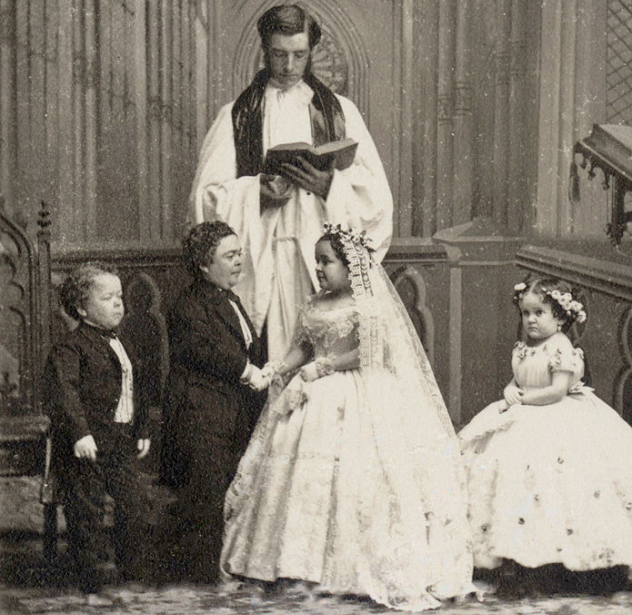
In 1842, showman P.T. Barnum was in the town of Bridgeport, Connecticut, when his attention was called to an “extraordinary local boy.” Charles Sherwood Stratton was four years old, stood only 63 centimeters (2’1″) tall, and weighed only 7 kilograms (15 lb). His father consented for his son to be an attraction for a month at Barnum’s New York Museum for $3 plus room and board. Barnum named his charge “General Tom Thumb,” made up a fanciful European background, and taught him etiquette, dance, song, and wit. Dressed in military regalia, General Tom Thumb proved to be enormously popular with the public.
Stratton soon embarked on an international tour. His first stop was London, though this was risky, as political tensions between the United Kingdom and the United States still lingered during this period. But Barnum and Stratton played the British class system well and moved slowly up the aristocratic ladder until they were invited to Buckingham Palace to perform for Queen Victoria.
General Tom Thumb’s performance of impressions and songs was well-received, but he had to be quickly educated in the English etiquette of never turning one’s back on the monarch. Walking backward proved difficult due to his stunted legs, so he instead turned, ran, stopped, turned back and bowed repeatedly. This caused a royal spaniel to start barking, so Stratton drew his sword and pretended to fight the canine. This caused sufficient hilarity in the court that the egregious breaches of protocol were brushed off as good fun, and Barnum and Stratton would receive further invitations.
Stratton would later go on to great success touring Europe as well as the Far East. His impersonation of Napoleon Bonaparte was said to have been wildly popular in both England and France. His entertainment lifestyle meant that he had to grow up fast, drinking wine from the age of five and smoking cigars at the age of seven. He married a beautiful young dwarf named Lavinia Warren in 1863. Their marriage ceremony (pictured above) in New York was a sensation, attracting 2,000 visitors, including congressmen, generals, and the elite of New York society. They would also be given a reception at the White House by Abraham Lincoln.
Barnum’s treatment of the pair became increasingly exploitative, particularly during a world tour in which a baby was hired in each country to play the couple’s infant child, though some historians say that this was a hoax by Lavinia in her autobiography. Stratton could have retired at an early age, but he continued to be drawn to the stage and performances. Even during periods when Barnum was facing financial difficulties, Stratton proved adept at organizing his own international tours. General Tom Thumb combined an exploitative edge with mass appeal and elaborate performances, a precursor to modern celebrity culture in all its horror and glory.
2 Don Santiago De Los Santos

The most famous Filipino in 19th-century Britain was a dwarf, and he very nearly died in infancy. According to The Mirror of Literature, Amusement, and Instruction:
He was exposed to death in his infancy, on account of his diminutive size. He was, however, miraculously saved by the Viceroy, who, happening to be hunting in that quarter, humanely ordered him to be taken care of and nursed with the same tenderness as his own children, with whom the little creature was brought up and educationed, until he had attained the age of manhood.
After the death of the viceroy, the man known as Don Santiago de los Santos chose to stay in Manila rather than accompany the viceroy’s children back to Spain. His family, however, neglected him, and he finally decided to travel to Madras on his own recognizance. There, he found a captain who was willing to take him to England. His journey was eventful. At one point, he was washed overboard and needed to be rescued, and he suffered so much from the cold temperatures of the north Atlantic that he forever avoided cold water thereafter.
De los Santos made a name for himself in England with his appearance and intelligence. His fame came from touring England with the 19-year-old, 213-centimeter-tall (7′) Miss Angela Melius, described as the “Giantess from the UNITED STATES,” whose appearance with Santos was a striking image. He is said to have spoken his native tongue, an Indian patois, fluent Portuguese, and “in English indifferently well.” He married a young woman from Birmingham named Ann Hopkins, who was 97 centimeters (38 in) tall, much taller than Santos’s own 66 centimeters (26 in). Medical journal The Lancet reported, “A protestant clergyman hesitated to marry them, on the presumption that it was contrary to the canon law, as being the means of propagating a race of dwarfs; but in this he was overruled by the high bailiff of Birmingham, and some legal opinions.”
The wedding was something of a sensation at the time, but in the aftermath, the couple seemed to settle down to a somewhat peaceful existence. Their only areas of disagreement were in religious worship, as Santos was a dedicated Catholic and Hopkins was a Protestant. Of greater concern, however, was her antipathy toward the Spanish. “Ever since an attempted robbery of her husband by his countrymen, she hates all Spaniards, and pouts, and frets, and scolds, whenever she sees him converse with one.”
1 Marshall Pinckney Wilder

Born in Geneva, New York, Marshall Pinckney Wilder was considered a bright young man from an early age. As a child, he became irritated by a police officer continually interfering with his and his friends’ ball-playing in a local park, so he took the matter directly to the mayor. He ended up receiving mayoral permission to play ball games in the park, ending the policeman’s reign of terror. He was also popular for his performances, once putting on a Punch and Judy puppet show in his backyard at the age of 12, featuring the requisite “travels, escapades and love making” but also a satirical rendition of the famous British operatic soprano Euphrosyne Parepa-Rosa.
After moving to New York City as an adult, he initially intended to work as a stenographer but found himself instead pulled toward humor. He became popular for his humorous recitations at parties and entertainment venues and was able to increase his price for an evening of gags from 50 cents to $5, impressive at the time. He was considered particularly to be a master of impressions, with motile features able to express a wide range of emotions and mental states. He counted among his fans the prince of Wales as well as Presidents Cleveland and Harrison.
Although he was initially referred to in the press as “a chimpanzee-like hunchback,” “a grotesque dwarf,” and “the most fantastically ugly man conceivable,” Wilder repeatedly won over audiences with his personable nature and sense of humor. He claimed kinship with dwarf and hunchback jesters of yore, saying that he was “jester to millions of sovereigns—that is, to millions of the sovereign American people, as well as to some foreign royalties.” He would often perform in orphanages, prisons, and mental hospitals. He would go on to edit the influential 10-volume The Wit and Humor of America, as well as appear in a number of short films.
Wilder would have enormous influence on the development of the humorous arts in the United States and beyond. There is a famous joke ascribed to Winston Churchill, in which a woman tells him ,“If I were your wife I’d put poison in your tea!” He replies, “If I were your husband I’d drink it!” It may actually have originated from Marshall Pinckney Wilder, as the earliest evidence of its existence is a version published in 1899, and Wilder claimed authorship of the gag in 1900.
Groucho Marx gave an interesting anecdote about Wilder: “I knew a fellow named Otto Kahn. His close friend was Marshall P. Wilder, who was a hunchback. One day they passed a synagogue on Fifth Avenue and Kahn turned to Wilder and said, ‘You know, I used to be a Jew.’ ‘Really?’ said Wilder. ‘I used to be a hunchback.’ ”
David Tormsen doesn’t particularly want to fight a turkey cock or spaniel. Email him at [email protected].
